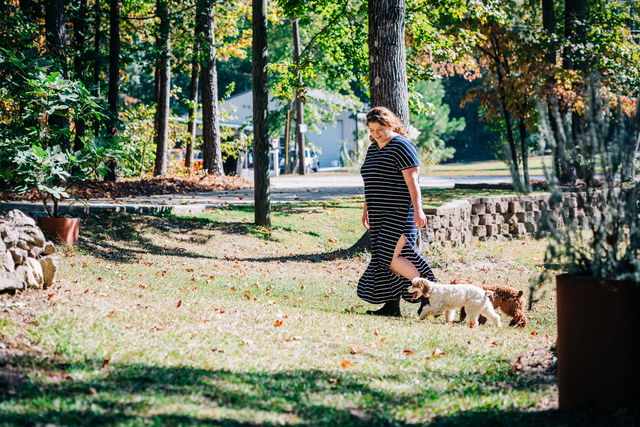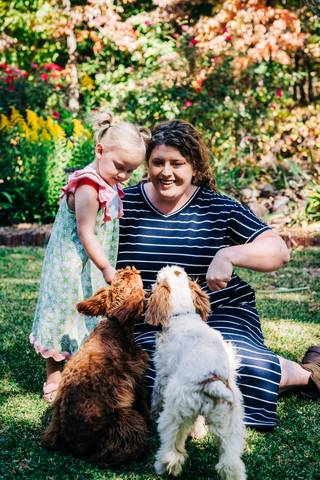 Raela Wells was letting her dogs, Annabelle and Abigail, late one night when a copperhead struck her twice.
Raela Wells was letting her dogs, Annabelle and Abigail, late one night when a copperhead struck her twice.
Photography: Andrea MabryGrowing up in Alabama, Raela Wells always heeded warnings such as “a snake only bites the second person” and “be on the lookout from dawn to dusk,” especially during the hot summer months. On a hot summer night, a young copperhead proved the sayings to be more fiction than fact as it sunk its fangs into Wells’ foot not once, but twice.
“I was letting my dogs out in our front yard when I felt an unusual prick and turned on my phone flashlight only to see a snake by my foot,” Wells said. “I tried to run away but suddenly could not move as pain started shooting through my leg. That was when the snake took another jab at me.”
After calling 911, Wells’ family looked online for tips on how to treat the bite. They quickly found themselves entangled in a web of contradictions.
“One website would say to ice the bite, and another emphasized never to ice it,” Wells said. “I was in tremendous pain, scared and had no clue what I was supposed to do.”
William Rushton, M.D., a medical toxicologist at the University of Alabama at Birmingham Marnix E. Heersink School of Medicine and medical director of the Alabama Poison Control Information Center located at Children’s of Alabama, soon received a call from the local hospital where Wells was treated. Rushton and a poison information specialist recommended they give her antivenom, an antibody product that can disable a venom’s toxin. Over the next four days, Wells received a total of 12 vials.
 Wells and her daughter, Ilaria Eloise
Wells and her daughter, Ilaria Eloise
Photography: Andrea MabryEven after being discharged, Wells was not out of the woods. Her leg remained swollen and covered in bruised spots. The pain continued shooting up her leg, and she could barely walk. Rushton co-directs the Comprehensive Snakebite Program at UAB and Children’s, a program designed to provide comprehensive follow-up care after a bite for anyone envenomated in the state of Alabama. The poison center quickly coordinated a follow-up appointment in the UAB Wound Care Clinic.
“When Raela visited the clinic, my first goal was reassurance,” Rushton said. “She was worried that she may never walk again or may lose part of her leg. I assured her that we had the experience and expertise to get her back to normal and would keep working with her until then.”
Rushton coordinated with Christopher Greene, M.D., associate professor in the Department of Emergency Medicine and a wound care expert who evaluated Wells.
“She was experiencing the local toxic effects of copperhead venom, which results in skin and soft tissue damage that presents as bruising,” Greene said. “It can also limit functionality for months without treatment. Even with two bites, she responded well to antivenom, which helped prevent large wounds and considerable soft tissue loss.”
Wells left her follow-up appoint with a boot and a physical therapy referral to help improve her range of motion and reduce swelling. She also left with a sense of relief.
“Dr. Rushton and Dr. Greene took the time to answer all of the questions we had since the beginning of this journey,” Wells said. “I learned more in the first 10 minutes speaking with them and the team than compared to what I found online.”
By her second visit to the clinic, which has had 92 referrals and 32 patients since opening in July 2021, Wells’ swelling and pain had drastically subsided. Her mobility slowly returned, and she was walking with a boot. With a few more physical therapy sessions, her UAB team expects she will make a full recovery.
“I am getting married in November, and my goal is to be able to walk down the aisle,” Wells said. “Thanks to my UAB team, that dream will be a reality.”